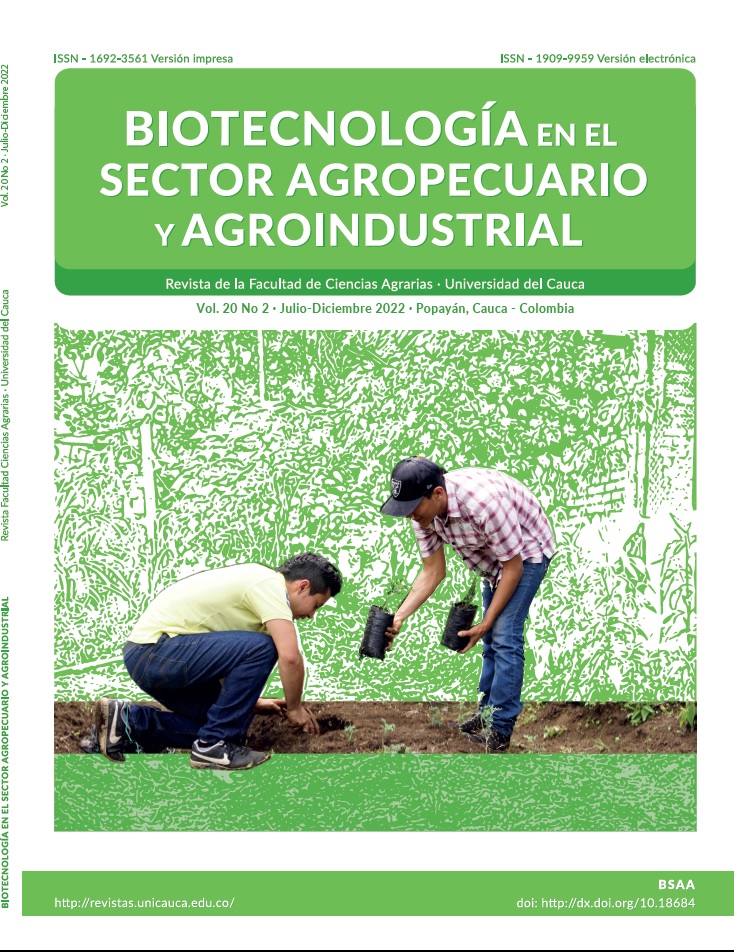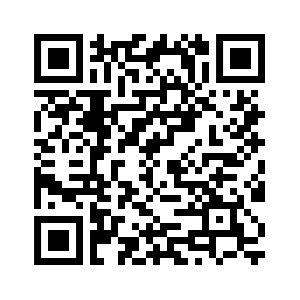Reconocimiento automático de la actividad de vacunos en pastoreo
Resumen
El uso de podómetros o collares para registrar el comportamiento del ganado en períodos cortos de tiempo (e.g. 24 h) es costoso. En esta situación particular, el desarrollo de tecnologías de bajo costo y fáciles de usar es relevante. Al igual que las aplicaciones de teléfonos inteligentes para el reconocimiento de la actividad humana, las cuales analizan datos de sensores de aceleración integrados, en este trabajo desarrollamos una aplicación de Android para registrar la actividad del ganado. Para el desarrollo de esta aplicación, se siguieron cuatro pasos principales: a) adquisición de datos para el entrenamiento del modelo, b) entrenamiento del modelo, c) desarrollo de la aplicación y d) utilización de la aplicación. Para la adquisición de datos, desarrollamos un sistema en el que se utilizaron tres componentes: dos teléfonos inteligentes (uno en la vaca y otro para el observador) y una cuenta de Google Firebase para el almacenamiento de datos. Para el entrenamiento del modelo, la base de datos generada se utilizó para entrenar una red neuronal recurrente. El rendimiento del entrenamiento se evaluó mediante la matriz de confusión. Para todas las actividades, el modelo entrenado proporcionó una predicción alta (> 96 %). El modelo entrenado se utilizó para desarrollar una aplicación de Android con la API de TensorFlow. Finalmente, se utilizaron tres teléfonos celulares (LG gm730) para registrar la actividad de seis vacas Holstein (3 en producción y 3 secas). Se realizaron observaciones directas y no sistemáticas de los animales para contrastar las actividades registradas por el dispositivo. Los resultados mostraron coherencia entre las observaciones directas y la actividad registrada por el dispositivo.
Descargas
Disciplinas:
Comportamiento animalReferencias bibliográficas
ANDRIAMANDROSO, ANDRIAMASINORO-LALAINA-HERINAINA; LEBEAU, FRÉDÉRIC; BECKERS, YVES; FROIDMONT, ERIC; DUFRASNE, ISABELLE; HEINESCH, BERNARD; DUMORTIER, PIERRE; BLANCHY, GUILLAUME; BLAISE, YANNICK; BINDELLE, JÉRÔME. Development of an open-source algorithm based on inertial measurement units (IMU) of a smartphone to detect cattle grass intake and ruminating behaviors. Computers and electronics in agriculture, v. 139, 2017, p. 126-137. https://doi.org/10.1016/j.compag.2017.05.020
BENAISSA, SAID; TUYTTENS, FRANK A.M.; PLETS, DAVID; CATTRYSSE, HANNES; MARTENS, LUC; VANDAELE, LEEN; WOUT, JOSEPH; SONCK, BART. Classification of ingestive-related cow behaviours using RumiWatch halter and neck-mounted accelerometers. Applied Animal Behaviour Science, v. 211, 2019a, p. 9-16.https://doi.org/10.1016/j.applanim.2018.12.003
BENAISSA, SAID; TUYTTENS, FRANK A.M.; PLETS, DAVID; PESSEMIER, TOONDE; TROGH, JENS; TANGHE, EMMERIC; VANDAELE, LEEN; VAN NUFFEL, ANNELIES; WOUT, JOSEPH; SONCK, BART. On the use of on-cow accelerometers for the classification of behaviours in dairy barns. Research in veterinary science, v. 125, 2019b, p. 425-433.https://doi.org/10.1016/j.rvsc.2017.10.005
BISONG, EKABA. Google colaboratory. En BISONG, EKABA. Building Machine Learning and Deep Learning Models on Google Cloud Platform. Apress, Berkeley (United States Of America): 2019, p. 59-64.https://doi.org/10.1007/978-1-4842-4470-8_7
CHAPA, JOSE M.; MASCHAT, KRISTINA; IWERSEN, MICHAEL; BAUMGARTNER, JOHANNES; DRILLICH, MARC. Accelerometer systems as tools for health and welfare assessment in cattle and pigs–a review. Behavioural Processes, 2020, p. 104262.https://doi.org/10.1016/j.beproc.2020.104262
CHEN, KAIXUAN; DALIN, ZHANG; LINA, YAO; BIN, GUO; ZHIWEN, YU; YUNHAO, LIU. Deep Learning for Sensor-based Human Activity Recognition: Overview, Challenges, and Opportunities. ACM Computing Surveys (CSUR), v. 54, n. 4, p. 1-40. https://doi.org/10.1145/3447744
DELLA_MEA, VINCENZO; QUATTRIN, OMAR; PARPINEL, MARIA. A feasibility study on smartphone accelerometer-based recognition of household activities and influence of smartphone position. Informatics for Health and Social Care, v. 42, n. 4, 2017, p. 321-334.https://doi.org/10.1080/17538157.2016.1255214
GIOVANETTI, V.; COSSU, R.; MOLLE, G.; ACCIARO, M.; MAMELI, M.; CABIDDU, A.; SERRA, M.G.; MANCA, C.; RASSU, S.P.G.; DECANDIA, M.; DIMAURO, C. Prediction of bite number and herbage intake by an accelerometer-based system in dairy sheep exposed to different forages during short-term grazing tests. Computers and Electronics in Agriculture, v. 175, 2020. p. 105582. https://doi.org/10.1016/j.compag.2020.105582
GUVENSAN, M. AMAC; DUSUN, BURAK; CAN, BARIS; TURKMEN, H. IREM. A novel segment-based approach for improving classification performance of transport mode detection. Sensors, v. 18, n. 1, 2018, p. 87.https://doi.org/10.3390/s18010087
IRVINE, NAOMI; NUGENT, CHRIS; ZHANG, SHUAI; WANG, HUI; WING, W.Y. Neural network ensembles for sensor-based human activity recognition within smart environments. Sensors, v. 20, n. 1, 2020, p. 216.https://doi.org/10.3390/s20010216
JAEGER, MARIA; BRÜGEMANN, KERSTIN; BRANDT, HORST; KÖNIG, SVEN. Associations between precision sensor data with productivity, health and welfare indicator traits in native black and white dual-purpose cattle under grazing conditions. Applied Animal Behaviour Science, v. 212, 2019, p. 9-18.https://doi.org/10.1016/j.applanim.2019.01.008
JOBANPUTRA, CHARMI; BAVISHI, JATNA; DOSHI, NISHANT. Human activity recognition: A survey. Procedia Computer Science, v. 155, 2019, p. 698-703. https://doi.org/10.1016/j.procs.2019.08.100
KRIEGER, STEFANIE; OCZAK, MACIEJ; LIDAUER, LAURA; BERGER, ALEXANDRA; KICKINGER, FLORIAN; ÖHLSCHUSTER, MANFRED; AUER, WOLFGANG; DRILLICH, MARC; IWERSEN, MICHAEL. An ear-attached accelerometer as an on-farm device to predict the onset of calving in dairy cows. Biosystems Engineering, v. 184, 2019, p. 190-199.https://doi.org/10.1016/j.biosystemseng.2019.06.011
KWAPISZ, JENNIFER R.; WEISS, GARY M.; MOORE, SAMUEL A. Activity recognition using cell phone accelerometers. ACM SigKDD Explorations Newsletter, v. 12, n. 2, 2011. P. 74-82.https://doi.org/10.1145/1964897.1964918
LANDALUCE, HUGO; ARJONA, LAURA; PERALLOS, ASIER; FALCONE, FRANCISCO; ANGULO, IGNACIO; MURALTER, FLORIAN. A review of iot sensing applications and challenges using RFID and wireless sensor networks. Sensors, v. 20, n. 9, 2020, p. 2495.https://doi.org/10.3390/s20092495
MENG, LONG; ZHANG, ANJING; CHEN, CHEN; WANG, XINGWEI; JIANG, XINYU; TAO, LINKAI; FAN, JIAHAO; WU, XUEJIAO; DAI, CHENYUN; ZHANG, YIYUAN; VANRUMSTE, BART; TAMURA, TOSHIYO; CHEN, WEI. Exploration of human activity recognition using a single sensor for stroke survivors and able-bodied people. Sensors, v. 21, n. 3, 2021, p. 799. https://doi.org/10.3390/s21030799
OGBAUBOR, GODWIN; LA, ROBERT. Human activity recognition for healthcare using smartphones. In Proceedings of the 2018 10th international conference on machine learning and computing, 2018, p. 41-46.https://doi.org/10.1145/3195106.3195157
O'LEARY, N.W.; BYRNE, D.T.; O'CONNOR, A.H.; SHALLOO, L. Invited review: Cattle lameness detection with accelerometers. Journal of dairy science, v. 103, n. 5, 2020, p. 3895-3911.https://doi.org/10.3168/jds.2019-17123
REYNOLDS, M.A.; BORCHERS, M.R.; DAVIDSON, J.A.; BRADLEY, C.M.; BEWLEY, J.M. An evaluation of technology-recorded rumination and feeding behaviors in dairy heifers. Journal of dairy science, v. 102, n. 7, 2019, p. 6555-6558.https://doi.org/10.3168/jds.2018-15635
RIABOFF, LUCILE; AUBIN, SEBASTIEN; BEDERE, NICOLAS; COUVREUR, SEBASTIEN; MADOUASSE, AURELIEN; GOUMAND, ETIENNE; CHAUVIN, ALAIN; PLANTIER, GUY. Evaluation of pre-processing methods for the prediction of cattle behaviour from accelerometer data. Computers and Electronics in Agriculture, v. 165, 2019, p. 104961.https://doi.org/10.1016/j.compag.2019.104961
SHUKLA, NISHANT; KENNETH, FRICKLAS. Machine learning with TensorFlow. 1 ed. Manning Publications Co. 3 Lewis Street Greenwich (United States Of America): 2018, 272 p, ISBN 9781617293870.
SMYTH, NEIL. Android Studio 3.5 Development Essentials-Java Edition: Developing Android 10 (Q) Apps Using Android Studio 3.5, Java and Android Jetpack. Payload Media, 2019, 778 p, ISBN-10 1951442016, ISBN-13 978-1951442019.
SONG, WEI; ZHANG, JING; HUANG, JEFF. ServDroid: detecting service usage inefficiencies in Android applications. En DUMAS, MARLON, PFAHL, DIETMAR; Proceedings of the 2019 27th ACM Joint Meeting on European Software Engineering Conference and Symposium on the Foundations of Software Engineering, Association for Computing Machinery. New York (United States Of America): 2019, p. 362-373.https://doi.org/10.1145/3338906.3338950
STRACZKIEWICZ, MARCIN; JAMES, PETER; ONNELA, JUKKA-PEKKA. A systematic review of smartphone-based human activity recognition methods for health research. NPJ Digital Medicine, v. 4, n. 1, 2021, p. 1-15.
https://doi.org/10.1038/s41746-021-00514-4
TARAFDAR, PRATIK; BOSE, INDRANIL. Recognition of human activities for wellness management using a smartphone and a smartwatch: a boosting approach. Decision Support Systems, v. 140, 2021, p. 113426.https://doi.org/10.1016/j.dss.2020.113426
VALKOV, VENELIN. Human Activity Recognition using LSTMs on Android — TensorFlow for Hackers (Part VI). 2017. https://medium.com/@curiousily/human-activity-recognition-using-lstms-on-android-tensorflow-for-hackers-part-vi-492da5adef64 [consultado Septiembre 16 de 2021].
VOICU, ROBERT-ANDREI; DOBRE, CIPRIAN; BAJENARU, LIDIA; CIOBANU, RADU-LOAN. Human physical activity recognition using smartphone sensors. Sensors, v. 19, n. 3, 2019, p 458.https://doi.org/10.3390/s19030458
WERNER, J.; UMSTATTER, C.; LESO, L.; KENNEDY, E.; GEOGHEGAN, A.; SHALLOO, L.; SCHICK, M.; O’BRIEN, B. Evaluation and application potential of an accelerometer-based collar device for measuring grazing behavior of dairy cows. animal, v. 13, n. 9, 2019, p. 2070-2079.https://doi.org/10.1017/S1751731118003658
ZHOU, DING-XUAN. Universality of deep convolutional neural networks. Applied and computational harmonic analysis, v. 48, n. 2, 2020, p. 787-794.https://doi.org/10.1016/j.acha.2019.06.004
Derechos de autor 2022 Universidad del Cauca

Esta obra está bajo una licencia internacional Creative Commons Atribución-NoComercial-SinDerivadas 4.0.
Datos de los fondos
-
Departamento Administrativo de Ciencia, Tecnología e Innovación (COLCIENCIAS),Departamento Administrativo de Ciencia, Tecnología e Innovación (COLCIENCIAS)
Números de la subvención convocatoria 836-2019, proyecto 66737


 Español
Español Inglés
Inglés





















.png)



